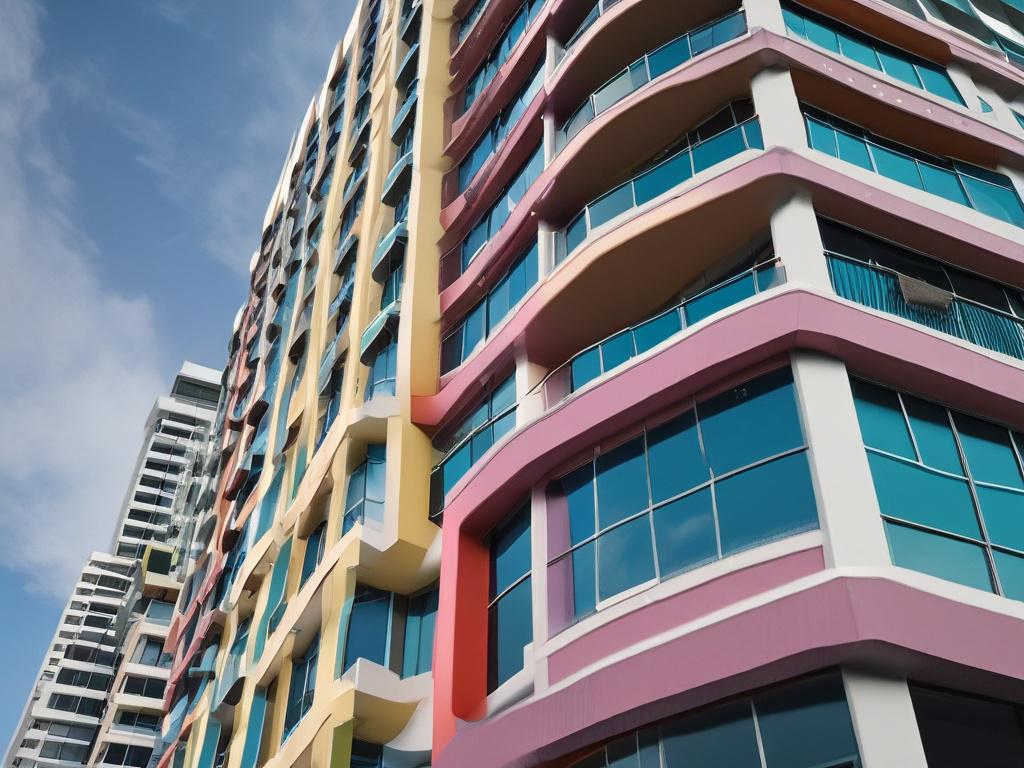
In South Florida, high-rise buildings face relentless challenges from the sun and salt-laden air. To keep these structures looking pristine and standing firm, it's crucial to invest in high-quality, weather-resistant paints designed explicitly for coastal environments. By understanding how these specialized coatings can shield your building against environmental damage, you can protect your investment and enhance its curb appeal.
This blog post will explore the essential steps to choose the right weather-resistant paints, delve into the impacts of salt and sun on your high-rise, and share effective application techniques that ensure lasting protection. With the right approach, you can safeguard your building from the unique challenges posed by its coastal location, maintaining its integrity and beauty for years to come.
Selecting the right weather-resistant paint is crucial for protecting your high-rise building in South Florida’s harsh coastal environment. Look for paints specifically formulated to withstand extreme UV exposure and salty air, which can quickly degrade inferior products. High-quality paints, such as those made with 100% acrylic or elastomeric formulations, offer superior adhesion and flexibility, allowing them to expand and contract with temperature fluctuations while maintaining their protective barrier. Always check for products that provide mildew resistance, as the humid conditions typical of South Florida can foster mold growth.
In addition to selecting the right paint type, also consider the color. Lighter colors often reflect sunlight, reducing heat absorption and helping keep your building cooler. Darker shades, while stylish, can absorb more heat and may lead to quicker wear and tear. To ensure optimal performance, consult with local paint suppliers who understand the nuances of coastal environments and can recommend products designed to meet your building's specific needs. Investing in high-quality, weather-resistant paints will save you money in the long run by minimizing repair and maintenance costs due to environmental damage.
Salt and sun pose significant challenges to the structural integrity and aesthetic appeal of high-rise buildings in South Florida. The harsh coastal environment leads to rapid deterioration, resulting in issues such as peeling paint, metal component corrosion, and concrete degradation. Saltwater in the air, combined with intense sun exposure, accelerates the wear and tear on exterior surfaces, highlighting the necessity for building owners to prioritize protective measures. Failing to address these elements can result in costly repairs and a decline in property value over time.
To mitigate the damaging effects of salt and sun, property managers must adopt a proactive approach to maintenance. Selecting high-quality, weather-resistant paints specifically formulated for coastal conditions will provide the foundational defense your building needs. These specialized coatings offer advanced protection against UV rays and salty air, helping to maintain the building's appearance and structural integrity. Regular inspections and maintenance can also identify early signs of wear, allowing for timely interventions that preserve your high-rise's longevity and aesthetic appeal in South Florida’s unique coastal setting.
To ensure maximum durability and effectiveness, proper surface preparation before applying weather-resistant paint is crucial. Start by thoroughly cleaning the exterior surfaces of your high-rise building to remove dirt, salt residue, and any previous peeling paint. Use a pressure washer for a deep clean and allow the surface to dry completely before proceeding. Once dry, inspect for any cracks or damage, and perform necessary repairs. Priming is also essential, especially for areas exposed to the sun and salt. A high-quality primer, specifically designed for coastal environments, enhances paint adhesion and provides an additional barrier against moisture and salt intrusion.
When it comes to the actual painting process, utilize the right tools and techniques to achieve a smooth, even finish. A high-nap roller works well for most exterior surfaces, while paint sprayers can be used to reach high areas and create a uniform coat. Apply the paint in thin layers, allowing adequate drying time between coats, to prevent blistering and create a strong protective seal. For prolonged protection, consider adding a topcoat that offers UV resistance and further shields against the harsh effects of the sun and salt. Following these application techniques will help maintain the aesthetic appeal of your high-rise while providing it with the necessary armor against environmental wear.
Reach out to UCI Paints West Palm Beach today using our contact form or call us directly. We’ll answer your questions, recommend the right products, and help you connect with trusted professionals.